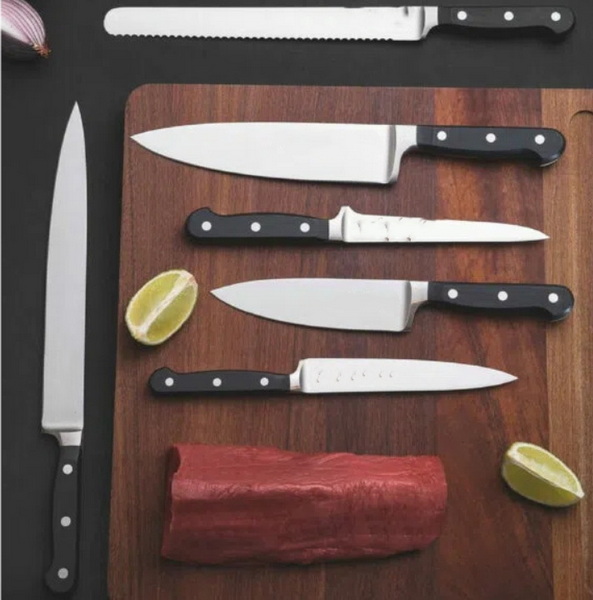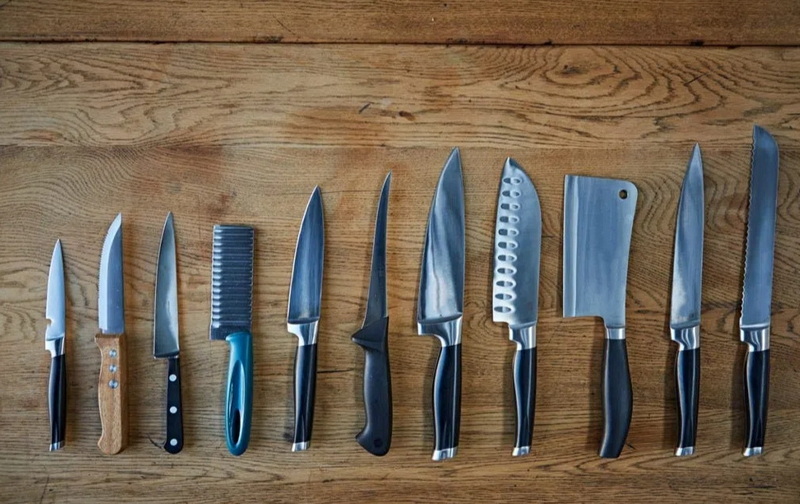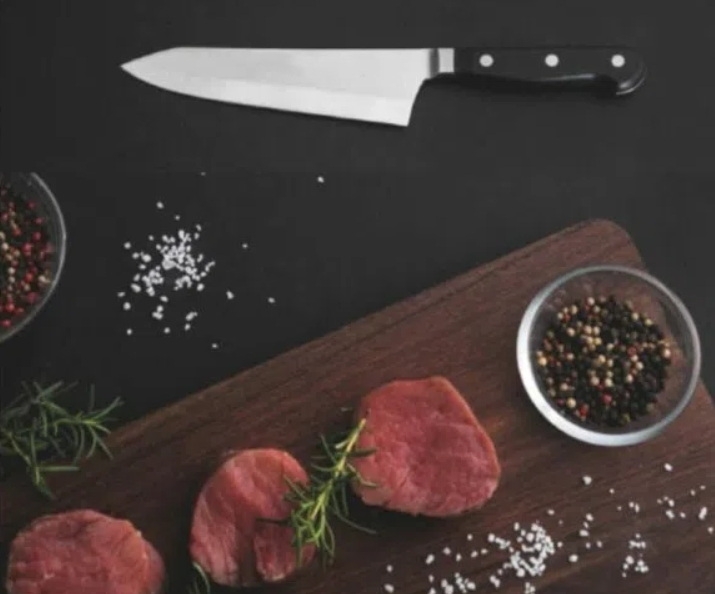

Views: 600 Author: sales@insightknife.com.cn Publish Time: 2025-01-07 Origin: Site








Content Menu
● Understanding Knife Materials
>> The Importance of Knife Material
>> Common Materials Used in Chef Knives
>> Characteristics of Stainless Steel
>> Advantages of Stainless Steel
>> Disadvantages of Stainless Steel
>> Characteristics of High-Carbon Steel
>> Advantages of High-Carbon Steel
>> Disadvantages of High-Carbon Steel
● Ceramic
>> Characteristics of Ceramic Knives
>> Advantages of Ceramic Knives
>> Disadvantages of Ceramic Knives
>> Characteristics of Composite Knives
>> Advantages of Composite Knives
>> Disadvantages of Composite Knives
● Choosing the Right Material for Your Chef Knife
>> Consider Your Cooking Style
>> Evaluate Your Maintenance Preferences
>> Test for Comfort and Balance
● Frequently Asked Questions regarding Chef Knives Material
>> 1. What is the main difference between stainless steel and high-carbon steel knives?
>> 2. Are ceramic knives suitable for all types of food?
>> 3. How often should I sharpen my chef knife?
>> 4. What is the best way to maintain a high-carbon steel knife?
>> 5. Can I use a ceramic knife for chopping herbs?
When it comes to kitchen tools, the chef's knife stands out as one of the most essential instruments in any culinary setting. The effectiveness of a chef's knife is significantly influenced by the material used in its construction. This article delves into the various materials used to make chef knives, exploring their properties, advantages, and disadvantages, ultimately guiding you to understand which material might be the best for your needs.
The material of a knife affects its performance, durability, maintenance, and overall user experience. A good knife should be able to hold an edge, resist corrosion, and provide a comfortable grip. The choice of material can also influence the knife's weight and balance, which are crucial for effective cutting. For instance, a well-balanced knife allows for more precise cuts and reduces the risk of fatigue during extended use. Additionally, the material can impact the knife's aesthetic appeal, with some materials offering a more traditional or modern look that may complement your kitchen decor.
Chef knives are typically made from a variety of materials, each with its unique characteristics. The most common materials include stainless steel, high-carbon steel, ceramic, and composite materials. Understanding these materials will help you make an informed decision when selecting a chef's knife. Each material not only affects the knife's functionality but also its longevity and the overall cooking experience. As you explore these options, consider how each material aligns with your cooking habits and preferences.

Stainless steel is one of the most popular materials for chef knives. It is an alloy that contains chromium, which provides resistance to rust and corrosion. This makes stainless steel knives relatively low-maintenance compared to other materials. The combination of chromium and other elements like nickel can also enhance the knife's strength and flexibility, making it a versatile choice for various kitchen tasks. Furthermore, stainless steel can be manufactured in different grades, allowing for a range of performance characteristics that cater to different culinary needs.
Corrosion Resistance: The chromium content in stainless steel prevents rust, making it ideal for use in humid kitchen environments. This property is particularly beneficial for chefs who frequently work with wet ingredients or in areas with high moisture levels.
Durability: Stainless steel knives are tough and can withstand the rigors of daily use without chipping or breaking. This durability ensures that the knife can handle a variety of cutting tasks, from slicing vegetables to chopping meat.
Ease of Maintenance: These knives are easy to clean and do not require special care, making them suitable for both home cooks and professional chefs. A simple wash with soap and water is often sufficient, and many stainless steel knives are dishwasher safe, adding to their convenience.
Edge Retention: While stainless steel can hold an edge, it may not retain it as long as high-carbon steel. This means more frequent sharpening may be necessary, which can be a drawback for those who prefer a knife that stays sharp longer.
Weight: Some stainless steel knives can be heavier than their high-carbon counterparts, which may not be ideal for all users. Heavier knives can lead to fatigue during prolonged use, especially for those who are not accustomed to handling such tools.
High-carbon steel is known for its superior sharpness and edge retention. It typically contains a higher percentage of carbon than stainless steel, which enhances its hardness. This hardness allows for a finer edge, making high-carbon steel knives particularly favored by professional chefs who require precision in their cutting tasks. The ability to achieve a razor-sharp edge is one of the primary reasons many culinary experts prefer high-carbon steel for their most important kitchen tools.
Sharpness: High-carbon steel can be honed to a finer edge, making it an excellent choice for precision cutting. This sharpness is particularly advantageous for tasks that require delicate slicing, such as filleting fish or preparing intricate garnishes.
Edge Retention: Knives made from high-carbon steel tend to hold their edge longer than stainless steel knives, reducing the frequency of sharpening. This characteristic is especially beneficial in a busy kitchen environment where time is of the essence.
Lightweight: These knives are often lighter than stainless steel knives, providing better maneuverability. A lighter knife can enhance control and reduce strain on the wrist, making it easier to perform repetitive cutting tasks.
Corrosion Susceptibility: High-carbon steel is prone to rust and staining if not properly maintained. Regular oiling and drying after use are necessary to prevent corrosion. This requirement can be a deterrent for some users who prefer a more low-maintenance option.
Maintenance: These knives require more care and attention, which may not be suitable for all users. For those who are willing to invest the time, however, the performance benefits can be well worth the effort.

Ceramic knives are made from a hard, non-metallic material that is extremely sharp and lightweight. They are often used for slicing fruits and vegetables. The manufacturing process involves high-temperature firing of zirconia, resulting in a blade that is not only sharp but also resistant to wear. This unique composition allows ceramic knives to maintain their edge for an extended period, making them a popular choice among home cooks who prioritize ease of use.
Sharpness: Ceramic knives can achieve a very sharp edge and maintain it for a long time without needing frequent sharpening. This sharpness is ideal for tasks that require precision, such as dicing onions or julienning vegetables.
Lightweight: Their lightweight nature makes them easy to handle, reducing fatigue during prolonged use. This feature is particularly beneficial for those who may struggle with heavier knives.
Non-Reactive: Ceramic does not react with food, making it a good choice for cutting acidic ingredients. This non-reactivity helps preserve the flavor and quality of the food being prepared.
Brittleness: Ceramic knives can chip or break if dropped or used on hard surfaces, limiting their durability. This brittleness means that extra care must be taken when handling and storing these knives.
Limited Versatility: They are not suitable for tasks that require prying or twisting, as they can easily break. This limitation can restrict their use in a busy kitchen where a variety of cutting techniques are employed.
Composite knives are made from a combination of materials, often blending the best features of different types of steel or incorporating synthetic materials for enhanced performance. This innovative approach allows manufacturers to create knives that offer a unique balance of properties, catering to the diverse needs of chefs and home cooks alike.
Balanced Properties: Composite materials can offer a balance of sharpness, durability, and corrosion resistance, making them versatile for various kitchen tasks. This versatility allows chefs to use a single knife for multiple purposes, streamlining their cooking process.
Innovative Designs: Many composite knives feature unique designs that enhance their aesthetic appeal and functionality. The combination of materials can also lead to improved ergonomics, making the knife more comfortable to use over extended periods.
Cost: Composite knives can be more expensive due to the advanced materials and manufacturing processes involved. This higher price point may not be justifiable for all users, especially those who are just starting to build their kitchen tool collection.
Maintenance: Depending on the materials used, some composite knives may require specific care to maintain their performance. Users should be aware of the maintenance requirements to ensure the longevity of their investment.
When selecting a chef knife, consider your cooking style and the types of food you prepare most often. If you frequently work with acidic ingredients, a stainless steel or ceramic knife may be more suitable. For precision tasks, high-carbon steel could be the best choice. Additionally, if you often prepare large quantities of food, a knife that balances well and feels comfortable in your hand will be essential for efficiency and comfort.
Your willingness to maintain your knife will also influence your choice of material. If you prefer low-maintenance options, stainless steel is likely the best fit. However, if you are willing to invest time in care, high-carbon steel can offer superior performance. Understanding your lifestyle and how much time you can dedicate to knife maintenance will help you select a material that aligns with your cooking habits.
Ultimately, the best knife is one that feels comfortable in your hand. Visit a kitchen supply store to test different knives and find one that balances well and feels right for your grip. Pay attention to the weight distribution and how the knife feels during various cutting motions. A well-balanced knife can significantly enhance your cutting experience, making it easier to achieve precise results.
The best material for a chef knife depends on various factors, including your cooking style, maintenance preferences, and personal comfort. Stainless steel offers durability and low maintenance, while high-carbon steel provides exceptional sharpness and edge retention. Ceramic knives are lightweight and sharp but require careful handling, and composite materials can offer a blend of benefits. By understanding the characteristics of each material, you can make an informed decision that enhances your culinary experience. Ultimately, the right chef knife will not only improve your cooking efficiency but also elevate your overall enjoyment in the kitchen.

The main difference lies in their composition and properties. Stainless steel knives contain chromium, which makes them resistant to rust and corrosion, while high-carbon steel knives have a higher carbon content, allowing them to achieve a sharper edge and better edge retention. However, high-carbon steel is more prone to rust if not properly maintained.
Ceramic knives are excellent for slicing fruits and vegetables due to their sharpness and non-reactive nature. However, they are not suitable for cutting hard foods like bones or for tasks that require prying or twisting, as they can chip or break easily.
The frequency of sharpening depends on the material of the knife and how often it is used. Stainless steel knives may need sharpening every few weeks, while high-carbon steel knives can hold their edge longer and may only need sharpening every few months. Regular honing can help maintain the edge between sharpenings.
To maintain a high-carbon steel knife, it is essential to keep it clean and dry after each use to prevent rust. Regularly oiling the blade with food-safe mineral oil can also help protect it from moisture. Additionally, avoid soaking the knife in water or placing it in the dishwasher.
Yes, ceramic knives can be used for chopping herbs, as they are sharp and can make clean cuts. However, care should be taken to avoid cutting on hard surfaces, as this can lead to chipping. It is best to use a cutting board made of softer materials like wood or plastic.